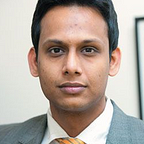Beyond Uber
A decade before Uber came about, Debora Spar wrote a book called, Ruling the Waves illustrating how rules evolve with disruptive technologies. Spar described how a technological innovation is first discovered and then rapidly commercialised. During this phase of commercialisation, windfall profits are made in the lack of a regulatory environment. This very lack of regulation leads to abuse and social concerns prompting a call for clearly defined rules and legal codes. Clearly, disruptive is one word we often hear commentators say in the same breath as Uber.
Uber stole a march over traditional taxi cab services which took bookings on the phone by launching a smartphone application that used the internet. Using the location information of a customer to efficiently coordinate the nearest driver. Offering ease and cost savings, it described itself to be cheaper than hailing an autorickshaw in Delhi. It’s not without reason that it became incredibly popular, expanding to ten Indian Cities and gathering a reported market share of 5%. Clearly there is something in this model that worked.
On December 7, 2014, Uber’s dream ride in India came to a sudden halt when an alleged rape by a Uber cab driver was reported in Delhi. As more details emerged over the week charges against it for negligence gained credibility. It was stated by many that Uber failed to conduct a background check on its drivers which was required under law for a service provider that provided a fleet of cars. Uber’s business model relied on drivers themselves owning the cars, holding a valid taxi drivers permit and insurance. Beyond this Uber did not seek any local registrations under the Motor Vehicles Act and operated purely as a virtual entity. Acting on this, media reports indicate the Delhi Transport Department blacklisted Uber and prohibited it from providing services.
This purported exercise of power has been made under the Motor Vehicles Act, 1988. Press statements indicated that the prohibition came from a lack of compliance on two aspects. The first was the lack of Uber to seek a licence under the Radio Taxi Scheme, 2006 and the second in which it permitted drivers holding All India Permits (which permit taxis to undertake inter-state journeys only), to ply their cabs within the local limits of Delhi. It was further indicated that all online services which adopted the technical model of Uber that facilitated customers to book cabs the internet were illegal. Similarly placed companies would now be required to comply with the Radio Taxi Scheme, 2006 or cease operations. This is even if they conduct thorough background checks on drivers and insure that they hold the correct taxi permits.
The regulatory response by the Delhi Transport Department is luddite. It is reminiscent of how the first regulations concerning motor cars sought to ban them, reasoning it would scare the horses which were used to draw carriages. Compliance with the Radio Taxi Scheme, 2006 in its present form will force companies to employ an outdated mode of technology and also raise up taxi fares. The scheme in its present form tethers cab services to make bookings only by phone. It further restrains the business model of an aggregator such as Uber, requiring any company to own a minimum fleet of cars as well as parking space. Clearly concerns on security can be fulfilled by aggregators given a policy dialogue is initiated on it.
There exists a possibility of this given that the Ministry of Road Transport and Highways recently released a draft Road Transport and Safety Bill, 2014 that may replace the Motor Vehicle Act, 1988. The draft bill focusses on the creation of a regulator which will be an independent agency for vehicle regulation and road safety. When engaging with this draft bill commentators may factor that the interests of users stand at a proverbial regulatory crossroads. While one offers the possibility of comfort, savings and security the other leads to a dead end.
